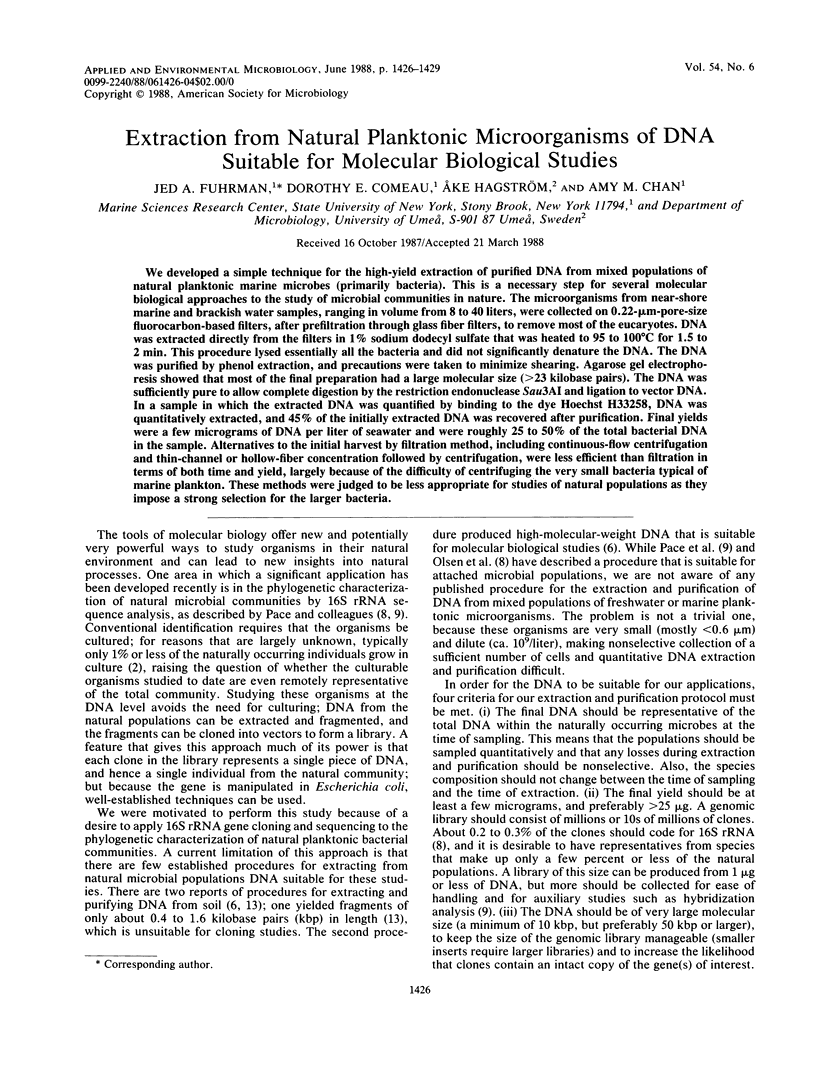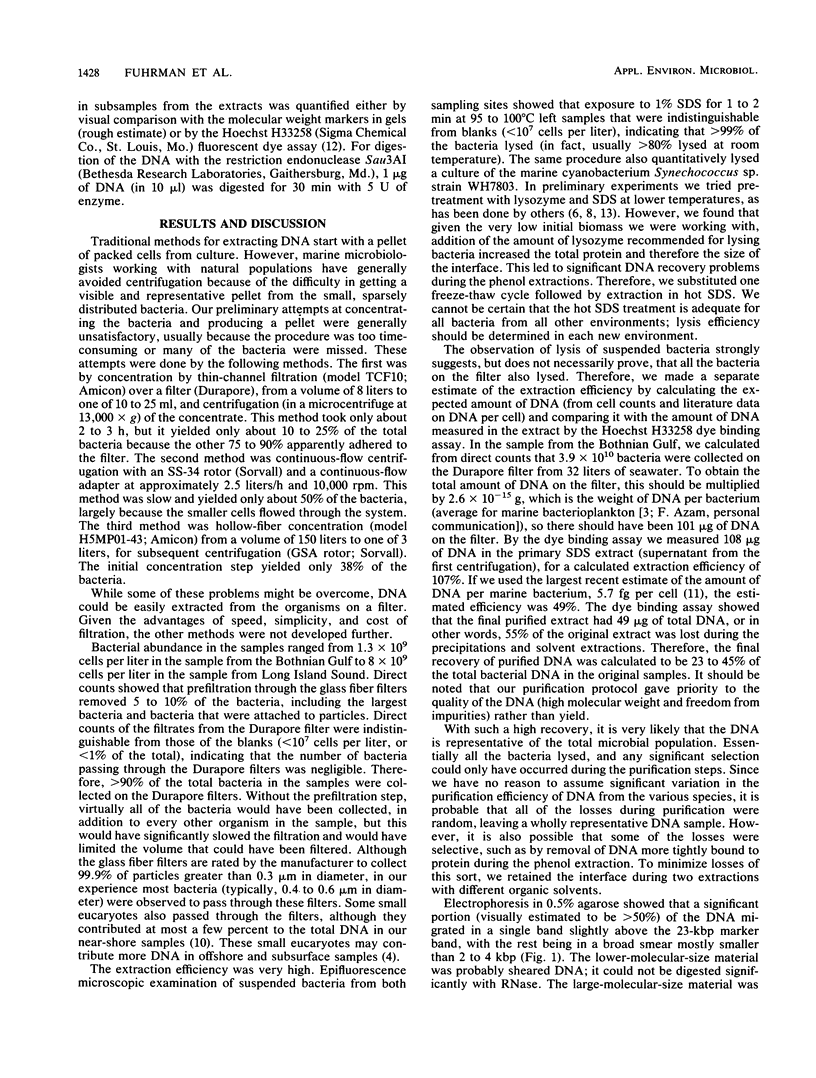Abstract
We developed a simple technique for the high-yield extraction of purified DNA from mixed populations of natural planktonic marine microbes (primarily bacteria). This is a necessary step for several molecular biological approaches to the study of microbial communities in nature. The microorganisms from near-shore marine and brackish water samples, ranging in volume from 8 to 40 liters, were collected on 0.22-μm-pore-size fluorocarbon-based filters, after prefiltration through glass fiber filters, to remove most of the eucaryotes. DNA was extracted directly from the filters in 1% sodium dodecyl sulfate that was heated to 95 to 100°C for 1.5 to 2 min. This procedure lysed essentially all the bacteria and did not significantly denature the DNA. The DNA was purified by phenol extraction, and precautions were taken to minimize shearing. Agarose gel electrophoresis showed that most of the final preparation had a large molecular size (>23 kilobase pairs). The DNA was sufficiently pure to allow complete digestion by the restriction endonuclease Sau3AI and ligation to vector DNA. In a sample in which the extracted DNA was quantified by binding to the dye Hoechst H33258, DNA was quantitatively extracted, and 45% of the initially extracted DNA was recovered after purification. Final yields were a few micrograms of DNA per liter of seawater and were roughly 25 to 50% of the total bacterial DNA in the sample. Alternatives to the initial harvest by filtration method, including continuous-flow centrifugation and thin-channel or hollow-fiber concentration followed by centrifugation, were less efficient than filtration in terms of both time and yield, largely because of the difficulty of centrifuging the very small bacteria typical of marine plankton. These methods were judged to be less appropriate for studies of natural populations as they impose a strong selection for the larger bacteria.
Full text
PDF



Images in this article
Selected References
These references are in PubMed. This may not be the complete list of references from this article.
- Ferguson R. L., Buckley E. N., Palumbo A. V. Response of marine bacterioplankton to differential filtration and confinement. Appl Environ Microbiol. 1984 Jan;47(1):49–55. doi: 10.1128/aem.47.1.49-55.1984. [DOI] [PMC free article] [PubMed] [Google Scholar]
- Hobbie J. E., Daley R. J., Jasper S. Use of nuclepore filters for counting bacteria by fluorescence microscopy. Appl Environ Microbiol. 1977 May;33(5):1225–1228. doi: 10.1128/aem.33.5.1225-1228.1977. [DOI] [PMC free article] [PubMed] [Google Scholar]
- Holben William E., Jansson Janet K., Chelm Barry K., Tiedje James M. DNA Probe Method for the Detection of Specific Microorganisms in the Soil Bacterial Community. Appl Environ Microbiol. 1988 Mar;54(3):703–711. doi: 10.1128/aem.54.3.703-711.1988. [DOI] [PMC free article] [PubMed] [Google Scholar]
- Olsen G. J., Lane D. J., Giovannoni S. J., Pace N. R., Stahl D. A. Microbial ecology and evolution: a ribosomal RNA approach. Annu Rev Microbiol. 1986;40:337–365. doi: 10.1146/annurev.mi.40.100186.002005. [DOI] [PubMed] [Google Scholar]
- Paul J. H., Myers B. Fluorometric determination of DNA in aquatic microorganisms by use of hoechst 33258. Appl Environ Microbiol. 1982 Jun;43(6):1393–1399. doi: 10.1128/aem.43.6.1393-1399.1982. [DOI] [PMC free article] [PubMed] [Google Scholar]



